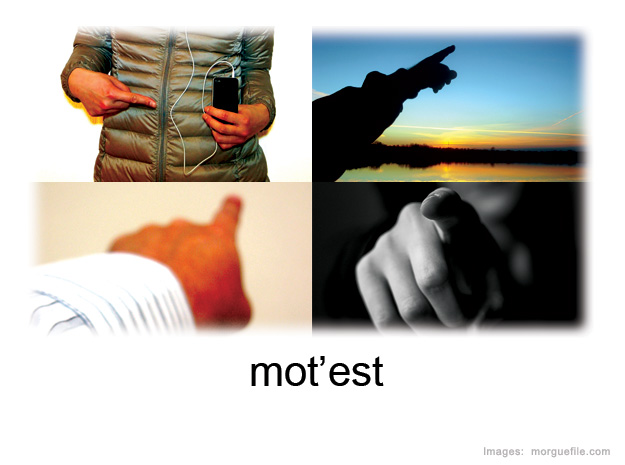Mót’est is the Halq’eméyel word for ‘to point at’. You can use Mót’est te’ ______! to ask people to point to various objects …
Pronunciation
- Mót’est sounds like MAW-tusst, except that the first t is “popped”.
- You make the popped t’ with an extra “pop” of air, which you produce by combining the basic t with a catch in the throat (glottal stop).
Audio: Elizabeth Herrling
Examples
Here are some examples of how you can use mót’est:
- Mót’est te’ sxeyes! – Point at your head!
- Mót’est te’ méqsel! – Point at your nose!
- Mót’est te’ qélém! – Point at your eye!
- Mót’est te’ thóthel! – Point at your mouth!
Phrases like this might be good for TPR language-learning games, especially with kids!
–ing Form
The -ing form for this verb is partially doubled, like this: mómet’est. (Audio here.)
You use mómet’est where you would use –ing on the verb in English.
For example: Mómet’est tsel teloqá:ys. – I am pointing at it now.
Related Words
Here are some words based on the same root as mót’est:
- mót’estses – index finger (literally pointing finger; –tses means of the hand)
- mót’estel – pointer (e.g. a stick used to point; the –tel ending marks tools and devices)
- shxwmót’estel – direction marker (e.g. an arrow marker on a trail, or drawn in the ground).
Mót’es (with no -t ending)
You can also say this verb with no-t at the end, like this: mót’es (or mómet’es for the –ing version; audio here.)
Use mót’es when you would just say I point, or You point, without referring to a specific object.


No comments yet.